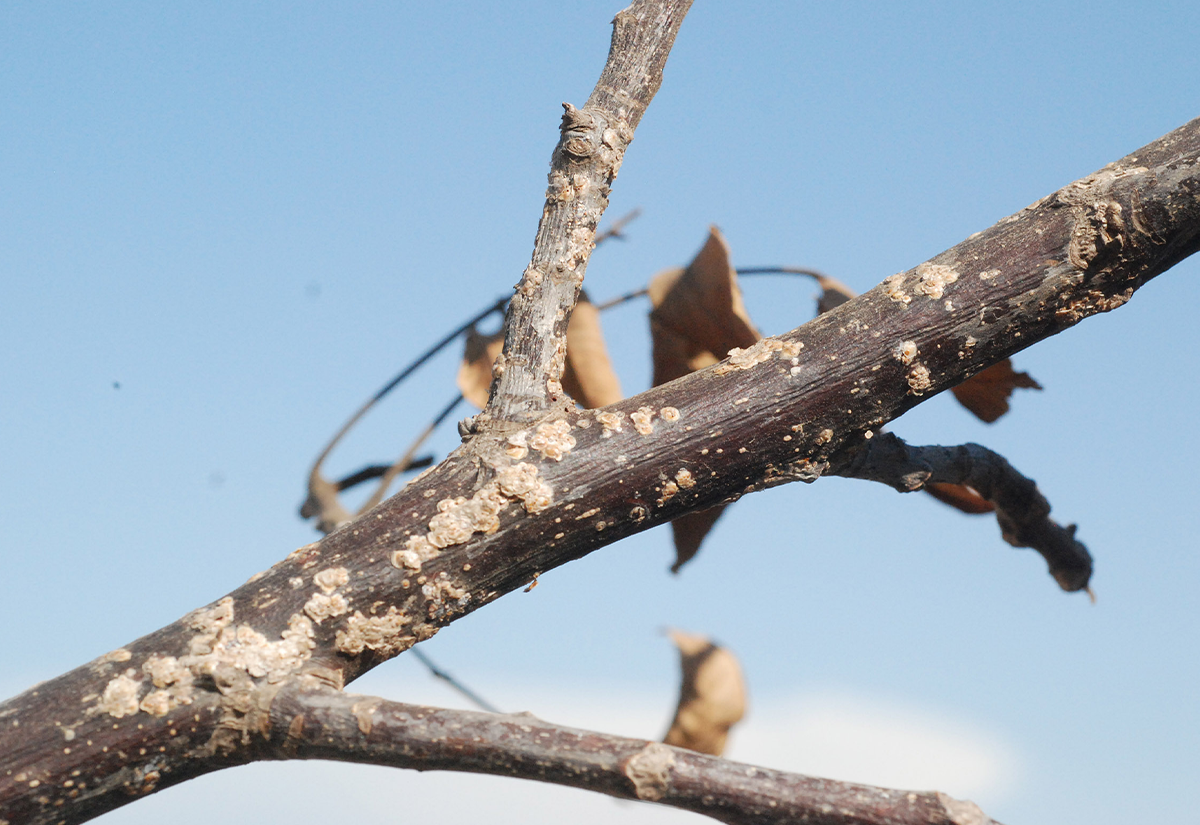
If walnut scale infestation has increased in your orchard over time, July is a good time to monitor for crawler activity.
Walnut scale is an armored scale that sucks plant juices from the inner bark by inserting their mouthparts into twigs and branches. Walnut trees with high numbers of scale can look water-stressed. Inside fruiting wood on lateral bearing cultivars may die back when encrusted with scale. High numbers of scale can cause cracking in the bark. The openings from the feeding can also provide entry to disease, including Botryosphaeria.
Jhalendra Rijal, UCCE area IPM advisor in Stanislaus, Merced and San Joaquin counties, said walnut scale infestations build up in individual orchards over time.
“They tend to pile up over multiple years if not controlled by parasitoids,” Rijal said. “It can take a couple of years to build up to treatment levels.”
Walnut scale can complete two generations in the Central Valley. It overwinters as second instar females and males. Scale resumes development in the spring. As adults, the males emerge from the scale covering as tiny, winged insects and mate with females who remain under the scale cover. Walnut scale eggs are laid in the spring. After hatching, female crawlers move around branches for a short time before they begin feeding on tree juices and secrete the scale cover. Male crawlers settle in the margins of the female cover.
In early stages, the scale covers are white, but the color changes to gray or brown. The first generation completes development by mid-July and females lay eggs in mid-August. These eggs hatch and the crawlers settle and molt once before winter.
Standard practice for walnut scale control is timing a spray application in the delayed dormant period. But it is important to make sure there is a need for the spray by doing dormant twig/branch sampling for the presence of live scale as well as parasitism. Parasites keep up with the walnut scale population in many orchards and there is no need for dormant applications. Rijal said if that timing was missed, an application could be made at the first-generation crawler timing in the spring (April to May). Monitoring with double sticky tapes on infested limbs or tree trunks can track crawler activity. Crawler monitoring is critical to identify a spray timing window. Don’t use the calendar time for treating crawlers as crawler emergence timing can vary from orchard to orchard. If increased crawler activity is detected, an application of an insect growth regulator can be done. For further guidelines, visit the UC IPM website.











